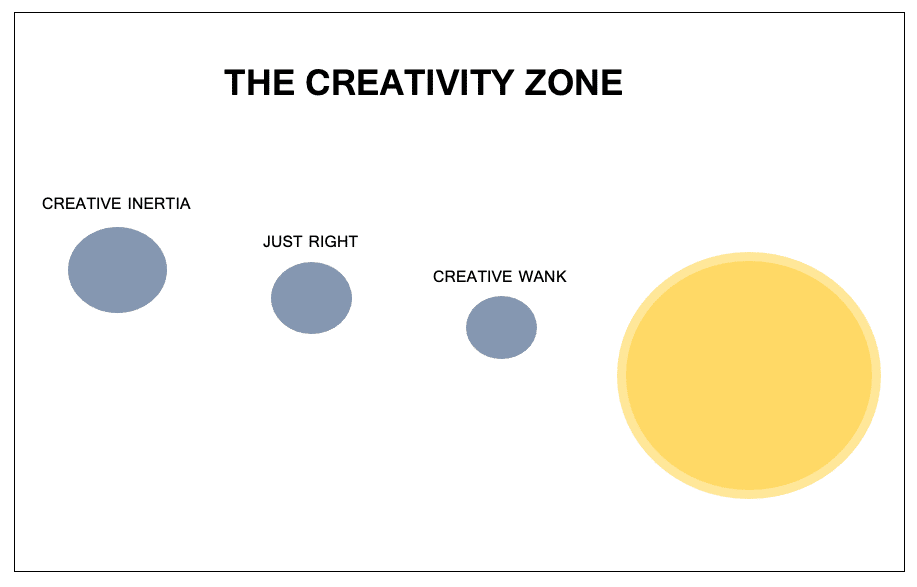My daughter has a subscription to the National Geographic Kids magazine. Before you ask, no, I’m definitely not one of those parents who force their kids to read nerdy stuff rather than watch mindless nonsense on YouTube.
(For the record, though, some of it really is mindless f***ing nonsense. Christ alive.)
The truth is that my daughter just loves reading about animals. In fact she kind of loses interest once it gets to the vegetable and mineral stuff, which makes me think the subscription might be slightly wasted on her.
Anyway, we were reading the magazine the other day, and we came across a piece about the ‘Goldilocks zone’.
Obviously I was already well versed in this astronomical concept (ahem) but in case you haven’t heard of it before, the Goldilocks zone is the distance of a planet from its star that enables the right temperature for water to remain liquid on the planet’s surface.
If its star is too far away, the planet gets too cold (i.e. the water freezes) and if its star is too close, the planet gets too hot (so the water boils away).
But if the planet is the right distance from its star (like the Earth is from our sun), then the temperature is just right for water to remain liquid. And as far as we know, liquid water is an essential ingredient for life – which is why the Goldilocks zone is also known as the habitable zone.
Like me, the term ‘Goldilocks zone’ originated in the 1970s.
Also like me, it needs the conditions to be just right before life is possible.
To come to life each morning, I need eight hours of uninterrupted sleep. Then three coffees, give or take. And finally a quick bump of coke. (I’m joking, of course – as if a father of young kids would ever get eight hours of uninterrupted sleep.)
After I came to life today, it struck me that there is a kind of Goldilocks zone for creativity. Let’s call it the ‘creativity zone’, because that’s the most creative name I can come up with right now. Suffice it to say I could really do with some c… er, coffee.
My ‘creativity zone’ theory is predicated on the idea that certain conditions must be met before creativity is possible.
For example, if you are too far removed from sources of inspiration, creativity is nigh-on impossible. After all, most creative work draws on and puts together various elements from external influences. ‘Everything is a remix’, as they say.
This is why it’s so important for creatives to keep proximity to varied sources of inspiration. We need to listen, read, observe, take note, and let it all percolate.
These inputs might not necessarily do much – they might sit in your head like cerebral space junk, as it were – but if you have them in your orbit (well, a bit behind the orbit, anatomically speaking), one day your brain might make a connection that’s ‘just right’.
I came across a great example of this on Twitter the other day. This clip shows how Damon Albarn used a preset melody from an 80s synth machine to create the introductory hook to the Gorillaz’ hit ‘Clint Eastwood’.
Who would have thought, huh? You just never know where inspiration might come from.
But conversely, it’s possible to get too close to sources of inspiration. I think we see this a lot in advertising – particularly when it comes to following industry trends.
Look at the way advertising has evolved over recent decades and this becomes pretty obvious.
The serif fonts. Then the sans serif fonts. Then the sans legibility fonts.
The long copy. Then the short copy. Then the complete disdain for copy.
Now we have the seemingly ubiquitous use of ‘Reimagined’ and ‘Reinvented’ and ‘Redefined’. The ‘ads for ad people’. And of course the ads for non-existent social causes, which only ever ran once in the Republic of Iranascam.
The fact is that an awful lot of advertising seems to draw its inspiration from other advertising, rather than from broader contexts. Which means it all becomes a bit of a circle-j… er, navel-gazing exercise.
So, to sum up my theory: if you’re too far away from sources of inspiration, your creative output will freeze up; but if you’re too close to them, you’ll just create hot air.
Or in case you want a more visual representation, I’ve made this handy illustration (please excuse the technical jargon).

So my advice is to look around for creative inspiration, but don’t get blinded by what’s closest to you.
And once you’ve soaked it all up, sleep on it – for that’s when creativity works its celestial magic. The journalist Miles Kington might just as well have been talking about creatives when he said: “Astronomers, like burglars and jazz musicians, operate best at night.”